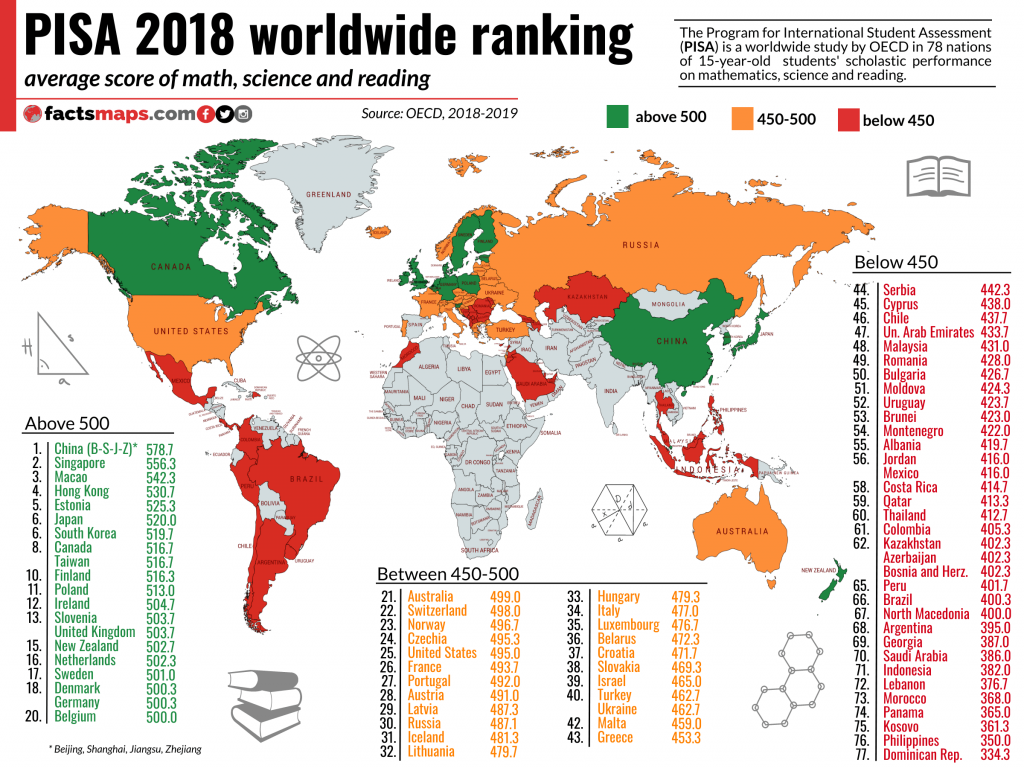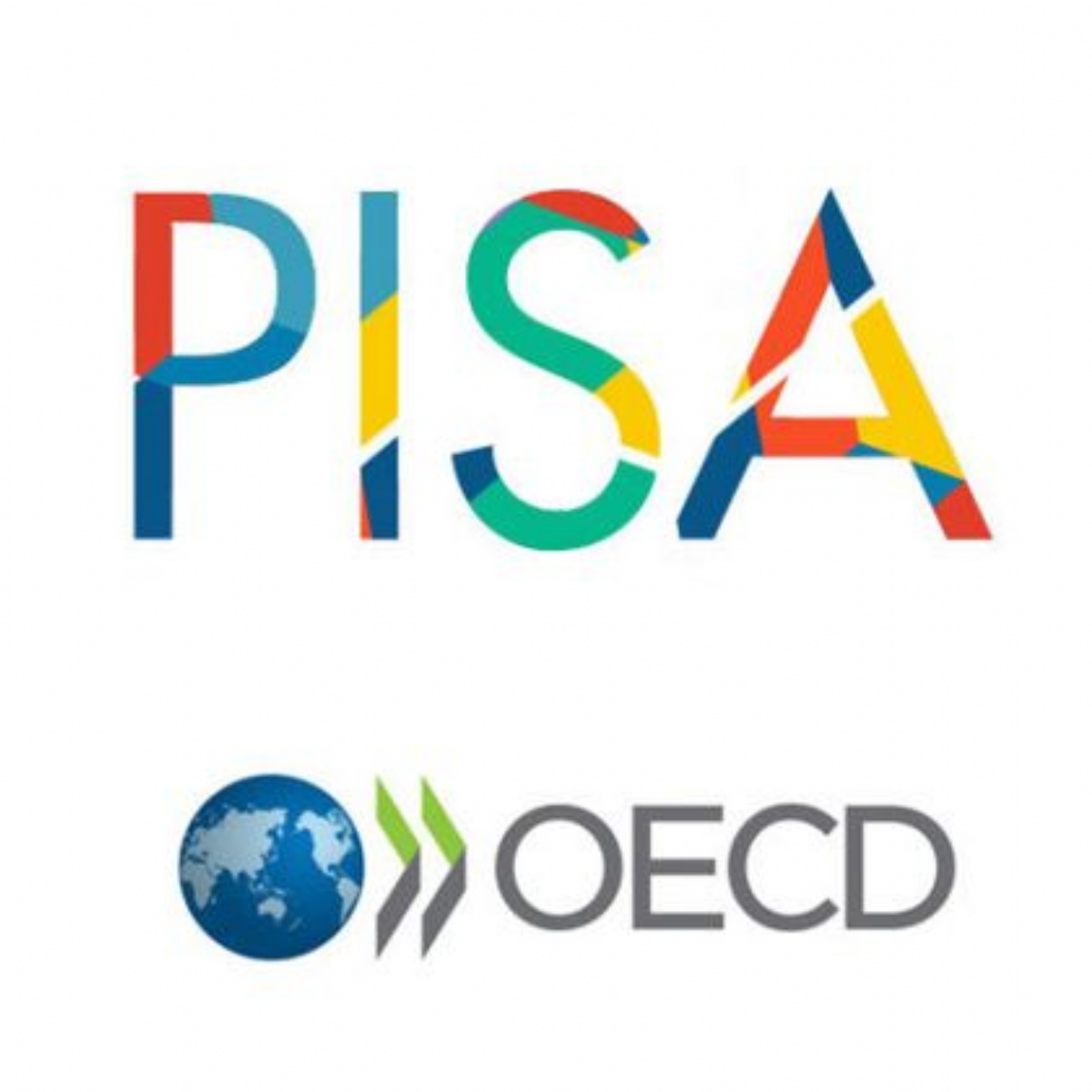
PISA is a Organisation for Economic Co-operation and Development (OECD) international assessment that measures 15 year-olds ability in literacy, numeracy and science to determine if their school taught skills can meet real-life challenges. The assessment allows educational policy professionals to determine which education systems are preparing students best for further studies and work. The assessment is designed by educational professionals and several countries volunteer to participate in order to determine how their education standards measure up to what is required in the real-world.
Credibility of the test is ensured by having stringent criteria for schools to participate and participants aged 15 are chosen at random in the schools who meet these criteria. The test is conducted in the students language of learning and is skills focused as questions are related to analysing, solving, interpreting and explaining things using their reasoning skills and already acquired knowledge. Students scores are not individualised instead they are collected into a national mean score, which allows the school or country to be ranked among other schools or countries.
Pisa is conducted every 3 years in various economies. Although one believes PISA is just about ranking countries the main aim OECD had in mind was to take the data and show whether school systems are becoming more or less effective in offering quality education to students and preparing them for after basic education. Furthermore, it also is determining whether 15 year-olds are obtaining the social and emotional skills they need to thrive in an ever-changing fast-paced world. Overall the data creates a picture of what an effective education system looks like in which all students can succeed and thrive as well as be prepared for their future. It thus gives the predictive quality of where education should move towards and shows what is successful and what is not.
It is valuable because in three years one can often determine what is changing in education and which direction it is taking that is most beneficial. For example, it shows how schools are improving and declining in countries and this gives educators the possibility to investigate what policies have been changed or implemented to bring about these changes and continue to watch the trend and see if these changes are beneficial long-term or not. The PISA is assessment itself is also changing as technology and access to education changes, thus becoming more relevant to what should be tested and is important in an effective education system.
For more information go to: https://www.oecd.org/pisa/

I have enjoyed going through PISA on a regular basis. However, in the past I was mainly focused on the placement of Canada. As I have more experience in teaching, especially with teaching students from all over the world I have started looking at the broader picture. In looking at this with a new lens I started to look at some of the locations of where my students come from and I noticed a note stating that students who wrote the test did not typically speak the language of the test at home. As such, I do feel that it is unfair to post such results, I could imagine how poorly I would do a test in another language. Also, when looking at Canada you do not see the mention of each province having a separate education system.
I suppose with all platforms it has its drawbacks, however they do seem to say that the students do it in the language they learn in so would have to double check that. Also it depends on if each province in Canada participated or not as that does play a role.
That is interesting, you definitely need to delve deeper to find all of the information. When I looked at the result of the Philippines it said 94% of those who wrote the test, which was in English, spoke a different language at home. Yet in looking at other results the reading tests were in different languages like you said. I do believe that should be a factor that should be more front and center. As for my mention of the provinces, I do think more information should be provided, as our education systems are different. Interestingly, in the middle of typing my response I did find the following report from the Canadian Government that comes with from the PISA results, https://www.cmec.ca/Publications/Lists/Publications/Attachments/396/PISA2018_PublicReport_EN.pdf. I am curious how many other countries have a different education system across the country.
For several years, my students sat the PISA test, and I also was invloved in the supervision and monitoring of the assessment procedures.
My thoughts on the test is that has a considerable level of validity and reliability. First, there is a random selection of participating schools and students, which makes the sampling credible. Moreover, the test is run in the student’s first language, and it aims to measure the actual progress of students on a national scale and compares the results with other data from countries across the globe. The interesting aspect is that the test is unorthodoxly designed, the questions and problems are tailored to test applying knowledge in novel and often unfamiliar situations.
One of the merits of the assessment is that it promotes educational globalization remarkably as countries can learn from the success of each other and even from their own exposed failure. A prime example Germany. In 2005, PISA results indicated that 1/5 students had a low proficiency level in reading with clear different results between socio-economic classes. The findings exposed the gaps in the educational system in German and decision-makers pushed for a change of policies and educational reform, In 2015, PISA results showed a dramatic rise of scores to “above average” nationally.
The learning compass 2030 issued by OECD also helps to shape the needed literacy and digital skills of the learners in the future.
However, many experts believe that this testing system has its disadvantages, imposing a model of curriculum or ideology that might not be suitable for all countries. Find more about the concerns here:
https://theconversation.com/problems-with-pisa-why-canadians-should-be-skeptical-of-the-global-test-118096
Very interesting topic. I am intrigued by how the assessment is designed to accommodate international schools. Currently, my school in Ecuador is conduct their MAP Growth Assessments. These assessments are done three times a year to measure student growth and achievement across Math, Language Arts, and Spanish. The challenge I am facing right now is getting teacher buy-in as many question the validity of the assessment due to the fact that it is conducted in English and the achievement norms are based off of schools in the US. There are separate achievement norms that can be used for comparisons but that data is notoriously difficult to obtain as it hinges on whether or not a third-party website decides to disclose the results for a particular year. As such, our primary external assessment to evaluate how we are doing as an institution is being routinely called into question.
Something like PISA sounds like it could circumvent a lot of those challenges due to the fact that it is designed with international schools in mind and offers the opportunity to complete the assessment in a learner’s primary language.
Despite this, I feel there will always be an excuse or reason for educators to doubt the validity of an external assessment if the results obtained do not reflect fondly on the educator or institution as a whole.